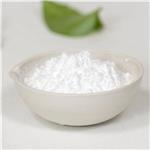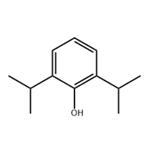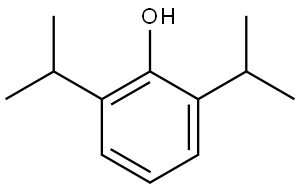Pharmacology of Propofol
Pharmacology
Central nervous system
Diffusion from the blood is relatively slow compared with agents such as thiopental. Loss of verbal contact is a useful marker of anaesthetic onset, and loss of response to vigorous jaw thrusting indicates sufficient depth for insertion of a supraglottic airway device (SAD). The EEG frequency decreases and amplitude increases with a dominant slow wave α/δ pattern; this is accompanied by reductions in cerebral metabolic requirement for oxygen (CMRO2 ), CBF and intracranial pressure. Non-epileptic myotonia may be evidenced by irregular muscular activity. Propofol reduces the duration of seizures induced by electroconvulsive therapy (ECT) in humans, but there are reports of convulsions after its use. Propofol has been used successfully in the management of status epilepticus, and epilepsy is not a contraindication. Recovery of consciousness is rapid, and there is a minimal hangover effect even in the immediate postanaesthetic period. Propofol is the preferred agent for volunteer studies on the neurophysiological mechanisms that underlie sedation and general anaesthesia.
Cardiovascular system
Arterial pressure decreases to a greater degree than with thiopental. This results principally from the vasodilatation caused by reduced sympathetic neural activity, but there is also a dose-dependent negative inotropic effect. Decreases greater than 40% may occur in elderly and frail patients. Hypotension is mitigated partially by slower administration (more than 30– 60s) and by allowing sufficient time for diffusion into the brain before additional bolus dosing. The pressor response to tracheal intubation is attenuated to a greater degree by propofol than thiopental. Heart rate may increase slightly after induction of anaesthesia, but there have been occasional reports of severe bradycardia or asystole after administration of propofol. Caution is needed in patients with a pre-existing bradycardia or if propofol is given with other vagomimetic drugs (e.g. remifentanil), and a vagolytic agent (e.g. glycopyrronium bromide or atropine) may be required.
Respiratory system
Apnoea occurs more commonly and for longer than with thiopental. During an infusion of propofol, tidal volume is lower and respiratory rate higher compared with the conscious state, with a depressed ventilatory response to carbon dioxide. These effects are more marked if opioid coinduction is used. Propofol has no effect on bronchial muscle tone, and laryngospasm is particularly uncommon. Laryngeal reflexes are suppressed to a greater extent than by thiopental, and there is a lower incidence of coughing or laryngospasm on insertion of a SAD provided that an adequate depth of anaesthesia is achieved.
Skeletal muscle
Tone is reduced, but movements may occur in response to surgical stimulation as the spinal cord action of propofol is limited compared with volatile agents. Coadministration of an opioid, nitrous oxide or a neuromuscular blocking agent is necessary to prevent such responses.
Gastrointestinal system
Propofol has no effect on gastrointestinal motility in animals and reduces the incidence of postoperative nausea and vomiting. The lipid load imposed by a continuous propofol infusion has been cited as a rare cause of pancreatitis in critically ill patients.
Uterus and placenta
Propofol has been used extensively in patients undergoing gynaecological surgery and does not appear to have any clinically significant effect on uterine tone. Propofol crosses the placenta, but its safety in the neonate has not been formally established.
Hepatic/renal
There is a transient decrease in renal and hepatic perfusion secondary to reductions in arterial pressure and cardiac output. Liver function tests are not deranged after infusion of propofol for 24 h.
Endocrine
Plasma concentrations of cortisol are decreased after administration of propofol, but a normal response occurs to the administration of adrenocorticotrophic hormone (Synacthen test).
);You may like
Related articles And Qustion
See also
Lastest Price from Propofol manufacturers

US $1.00/kg2024-05-07
- CAS:
- 2078-54-8
- Min. Order:
- 1kg
- Purity:
- 99%
- Supply Ability:
- 10 ton

US $151.00-125.00/kg2024-05-06
- CAS:
- 2078-54-8
- Min. Order:
- 1kg
- Purity:
- 99%
- Supply Ability:
- 8000kg

